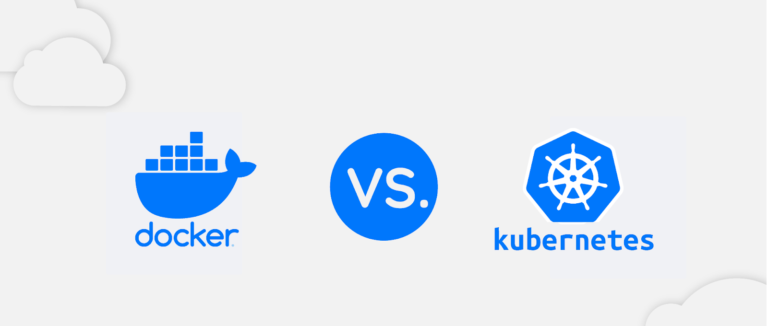A paradigm shift known as serverless computing has been steadily gaining ground in the ever-evolving field of web development. Function-as-a-Service (FaaS), a more adaptable and effective strategy, is challenging traditional server-based designs due to the growth of cloud services and the demand for highly scalable applications. This novel strategy offers better scalability, lower operational costs, and a more efficient development cycle. This post will explore the concepts of FaaS and its advantages for reaching unequaled scalability as we dig into the world of serverless web development.
What is serverless architecture?
Without managing or provisioning servers, web applications can be created and run using a serverless architecture. You employ third-party services that take care of the backend logic, storage, security, and other tasks on your behalf rather than hosting your servers or renting them from a cloud provider. These services are frequently referred to as functions as a service (FaaS) or serverless functions. You only pay for the resources you use, and the services dynamically scale up or down in response to demand.
What is Function-as-a-Service?
Serverless execution of modular chunks of code on the edge is possible using function-as-a-service (FaaS). In reaction to an event, such as a user clicking on an element in a web application, FaaS enables developers to write and change a piece of code on the fly. This is a low-cost method of implementing microservices and makes scaling code simple.
How Does Serverless Architecture Work?
Cloud services from providers like Amazon Web Services (AWS), Google Cloud Platform (GCP), or Microsoft Azure are used to implement serverless architecture. By using these services, developers may launch and operate their cloud-based applications without worrying about the supporting infrastructure.
The following phases make up a serverless application’s usual workflow:
- The code for the program is written by the developer and is broken up into smaller, independent parts.
- The deployment package, which contains the code, is subsequently uploaded to the cloud service provider’s platform.
- For each function, the cloud provider builds a container with all the required dependencies and configurations.
- The cloud provider automatically initiates the associated function whenever an event, such as an HTTP request or a message from a queue, takes place.
- The function executes within its container, and the client receives the results.
The Foundations of Serverless Architecture
Several essential elements of serverless architecture come together to provide effective and seamless development:
- Scaling: One of its most important advantages is the serverless architecture’s inherent capacity to scale automatically in response to demand. The platform automatically sets up the required resources to handle the load as the volume of incoming events rises, resulting in optimal performance.
- Orchestration: Orchestration entails coordinating the execution of numerous tasks to accomplish a more significant objective. This could entail managing intricate workflows or processing data in a precise order.
- Events: Events serve as triggers to start functions being performed. The most typical types of events are HTTP requests, database changes, file uploads, and scheduled tasks.
- Functions: The functions themselves serve as the essential building pieces. These are pieces of code that carry out particular tasks, such as receiving user requests, processing data, or connecting with databases.

Advantages of Embracing Serverless Web Development
- Reduced Operational Overhead: Server provisioning, monitoring, logging, and security patching are handled by serverless platforms. Developers are relieved of the administrative burden, freeing them up to concentrate more on producing code and delivering features.
- Scalability: As was already noted, serverless architecture enables applications to autonomously scale up or down by workload. This means that resource over- or under-provisioning is not a concern for developers.
- Integration with Edge: Serverless can fill the gap between the cloud’s data-driven capabilities and Edge’s constrained computational capacity. The limits of each architecture can be removed from the other, opening up new options.
- Cost-effectiveness: When using a serverless architecture, you only pay for the actual compute resources utilized when performing a function. Considering that there is no need to maintain and pay for unused server instances, the pay-as-you-go strategy can result in significant cost reductions.

Serverless Computing Challenges
- Resource Restrictions: Serverless functions have memory and execution time restrictions. This may necessitate careful optimization and have an impact on the kinds of jobs a function can do.
- Debugging serverless functions can be more difficult than debugging traditional apps. Implement reliable monitoring and logging tools to make sure you can identify problems promptly and fix them.
- Cold Starts: When a function is called after being inactive for some time, it experiences a cold start. The platform must allocate resources at a cold start, which causes a brief pause in function execution. This problem can be reduced by employing techniques like function warming or picking a platform with improved cold start times.

Best Practices for Serverless Web Development
- Granular Functions: Separate your application into compact, task-specific functions. This encourages reuse and makes maintenance easier.
- Use event-driven design: Build loosely linked components that interact via events by making use of FaaS’s event-driven nature. This improves modularity and scalability.
- Manage Dependencies: Keep function dependencies under control and as few as possible. To reduce deployment package sizes, use package managers and consider lightweight frameworks.
- Testing and Observation: Adopt thorough testing procedures and put in place reliable monitoring and recording tools to find and fix problems as soon as possible.
The use of Function-as-a-Service and serverless web development marks a significant advancement in the creation and deployment of applications. By empowering developers to concentrate on creating code rather than managing infrastructure, serverless architecture increases agility, scalability, and cost-effectiveness. Cold starts and vendor lock-in are problems, but they can be lessened with proper planning and adherence to best practices.
Adopting serverless architecture becomes a compelling idea as the demand for online applications that can fluidly handle changing workloads increases. Developers can use the power of Function-as-a-Service to build highly scalable and effective web applications that adapt to the constantly shifting needs of the contemporary digital landscape by knowing its principles, advantages, and limitations.








